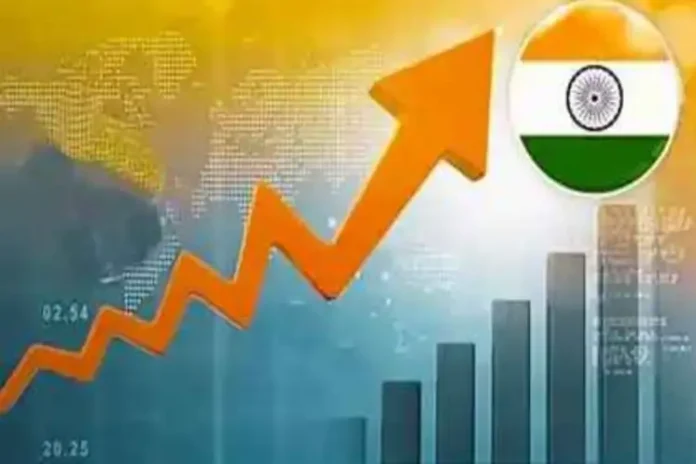India continues to demonstrate economic resilience amid persistent global headwinds, maintaining strong growth momentum and outperforming most major economies. According to the latest Care Edge Economic Pathways report, India’s GDP grew by 7.4% in Q4 FY25, bringing the full-year growth to 6.5%, well above global averages.
At a time when much of the world is grappling with slowing trade, inflationary pressures, and geopolitical tensions, India has remained a bright spot thanks to its strong domestic fundamentals, targeted fiscal policies, and a consumption-driven economy.
Growth Anchored in Key Sectors
India’s growth in the fourth quarter was powered by the services and construction sectors, which posted impressive performances. Construction activity alone surged by 10.8%, indicating ongoing infrastructure momentum, while manufacturing and trade showed steady improvement.
Private consumption remained robust, particularly in rural areas where wage growth and a favorable agricultural season helped sustain demand. Additionally, a sharp rise in electronics exports and a narrowing trade deficit — aided by reduced oil and gold imports — bolstered the country’s external position.
Inflation Cooling, Monetary Support Steady
Headline CPI inflation dropped to 3.2% in April 2025, the lowest since 2019, helped by a strong Rabi crop and stable food prices. The Reserve Bank of India (RBI), confident in the inflation outlook, reduced the repo rate by 50 basis points to 5.5% in June and eased liquidity norms, signaling a shift toward a more accommodative monetary stance.
India’s fiscal deficit for FY25 stood at 4.8% of GDP, with capital expenditure crossing ₹10.5 lakh crore, demonstrating continued public investment in infrastructure and capacity building.
Global Recognition and Strong Forecasts
India is expected to remain the fastest-growing major economy in the world in 2025–26. The World Bank and United Nations forecast GDP growth of 6.3%, while the International Monetary Fund (IMF) and Asian Development Bank (ADB) project growth between 6.5% and 6.8%.
India’s economic trajectory starkly contrasts with many advanced economies, where growth projections remain tepid due to inflation, energy disruptions, and geopolitical instability.
Risks Remain on the Horizon
Despite strong fundamentals, several challenges remain:
-
External risks from global trade tensions, including tariff threats and geopolitical instability in the Middle East, could impact exports and commodity prices.
-
Market volatility, including fluctuations in the rupee, FPI outflows, and recent equity market corrections, signal underlying fragility.
-
Private investment is still lagging, with corporate spending yet to pick up pace despite high-capex public sector outlays.
India’s Resilience a Global Outlier
India’s sustained economic performance amid a sluggish global environment reinforces its rising stature in the global economic order. With prudent policy interventions, a large consumer base, and continued emphasis on infrastructure and innovation, the country is poised to achieve stable growth in FY26.



